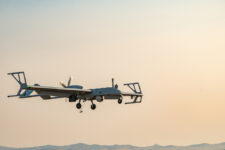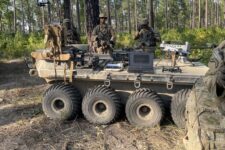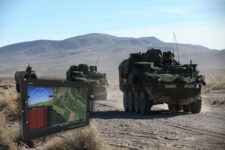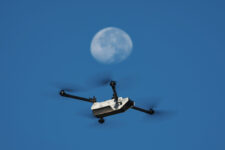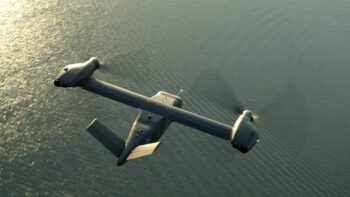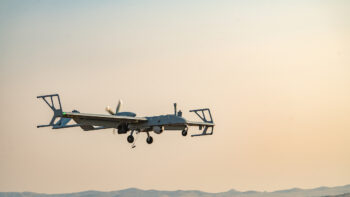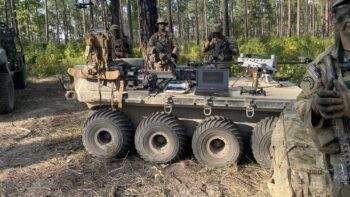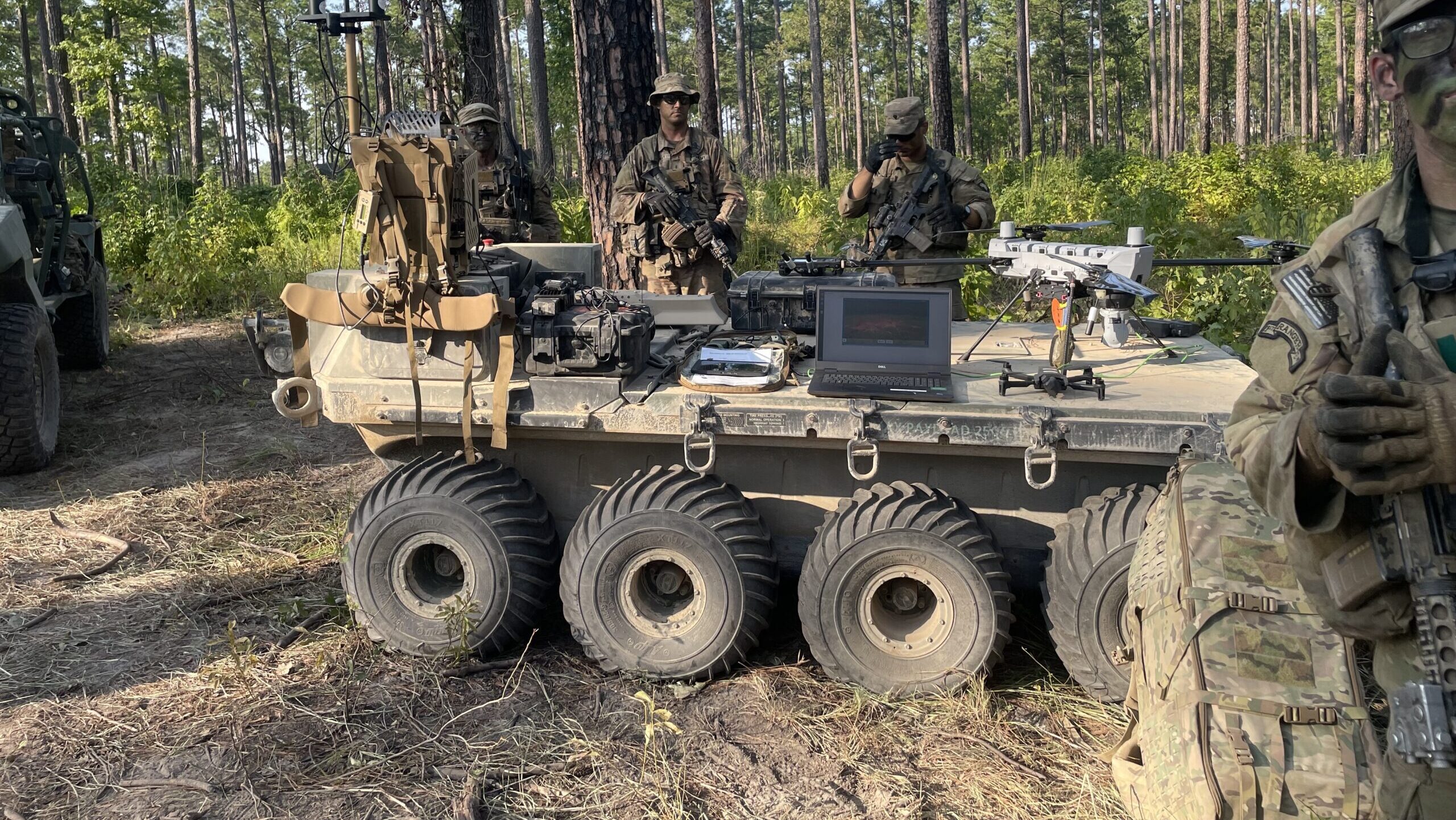
US Army soldiers with the 101st Airborne Division use SMETs during a recent training exercise. (Ashely Roque/Breaking Defense)
AUSA 2024 — As one US Army Program Executive Office prepares to pare down the number of commercial vendors vying for a ground autonomy contract, it is also shedding a separate robotic program — the Squad Maneuver Equipment Transport, or S-MET.
The service currently has a host of robotic programs in various stages of development spread across different offices. Inside the the Program Executive Office for Combat Support and Combat Service Support (PEO CS&CSS), for example, the team is managing the acquisition of the S-MET robotic mule, while also running the Ground Expeditionary Autonomy Retrofit Systems (GEARS) competition — an initiative to field self-driving trucks.
But starting next month, PEO Ground Combat Systems will take over the S-MET reins when the program is handed over to the Robotic Combat Vehicle product manager.
“This transition combines the two [Assistant Secretary of the Army for Acquisition, Logistics, and Technology] ground maneuver robotic programs under a single program management office to gain efficiencies in acquisition planning that will soon include modular mission payload integration onto both the RCV and S-MET platforms,” Army spokeswoman Rae Higgins wrote in an email to Breaking Defense.
According to Higgins, shifting who is in charge of S-MET is envisioned as a way to better streamline efforts with a host of other offices, including the Army’s Combat Capabilities Development Command’s (DEVCOM’s) Ground Vehicle Systems Center. DEVCOM, for example, is currently internally developing an autonomy package previously known as the Robotic Technology Kernel (RTK) but recently rebranded as Army Robotic Common Software (ARCS). That autonomy work is currently billed as a centerpiece for RCV autonomy plans, and moving S-MET over to the same team could build off that work.
But while S-MET Inc I acquisition and the ongoing S-MET Inc II competition are moving out, Higgens said the PEO CS&CSS shop is holding on to GEARS development and in the process of evaluating three vendors’ prototypes — Carnegie Robotics, Forterra and Neya Systems.
By the end of the year, she said, the trio will be pared back to two vendors for phase II testing and evaluation, running through the end of September 2025. Then in fiscal 2026, the Army will kickstart phase III by crowning an ultimate victor and potentially awarding a contract for autonomy platform integration on up to 41 Palletized Load System trucks.

